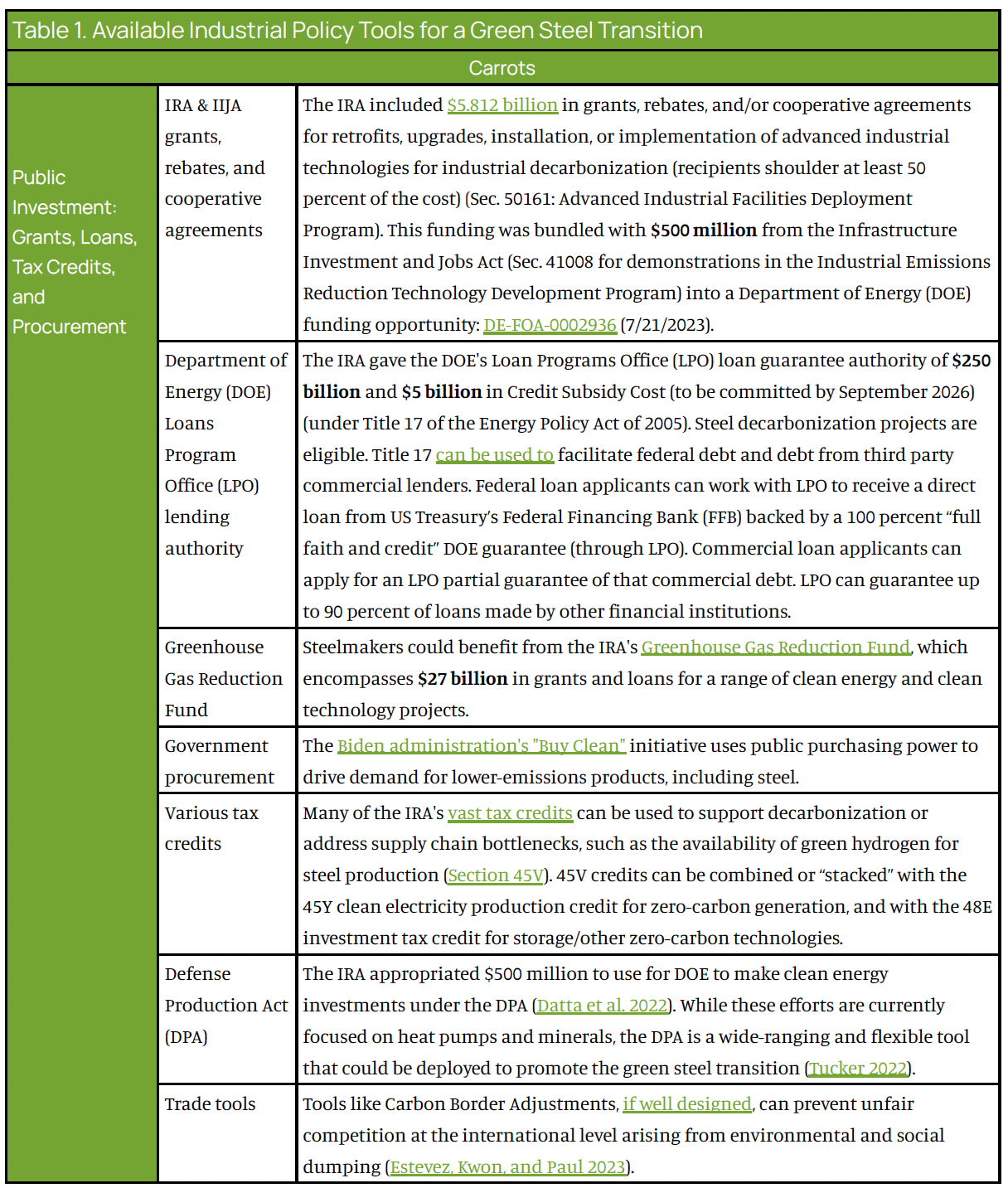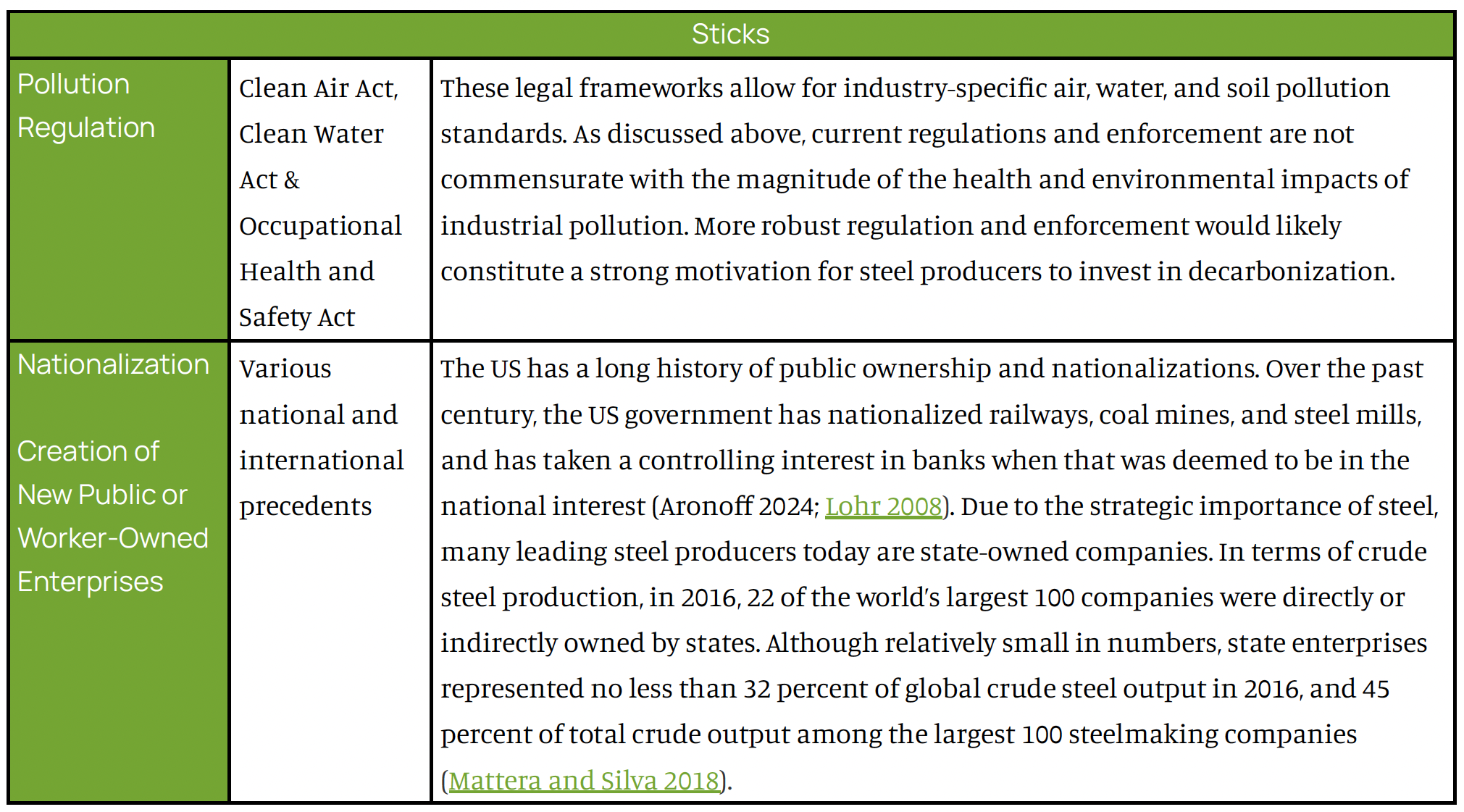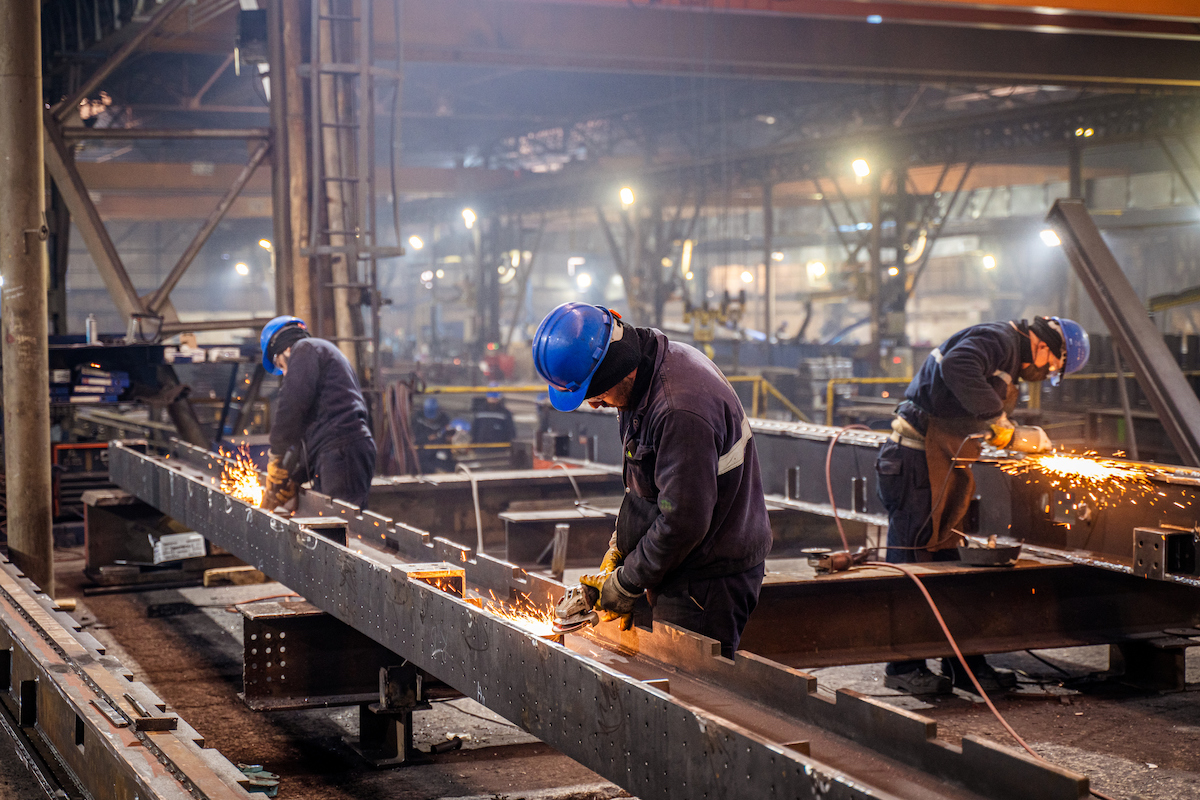The Political Economy of Steel Decarbonization: Prospects and Challenges of a Green Steel Transition in Dearborn, Michigan
March 21, 2024
By Isabel Estevez, Hebah Kassem, Yong Kwon, Iliana Paul
Executive Summary
“Steel decarbonization”—the transformation of the steel industry to reduce its carbon footprint—is an emerging US industrial policy priority. Several factors suggest momentum for a rapid transition to greener steel production: Viable technological pathways are available, demand for greener steel is increasing, and there appears to be broad support from social actors, including the labor movement; federal, state, and local governments; climate groups; and environmental justice communities impacted by steel pollution. However, despite these favorable conditions, the green steel transition in the US has stalled in comparison to European competitors, imperiling the long-term survival of the US steel sector. This paper delves into the economic and political forces influencing the shift toward more sustainable steel production, focusing on one case: the Dearborn Works facility in Dearborn, MI, owned by steel giant Cleveland-Cliffs.
Our analysis identifies four primary challenges impeding progress toward greener steel production: (i) community fears of increased economic insecurity arising from techno-economic shifts; (ii) the supply bottleneck created by a lack of renewable energy infrastructure to produce green hydrogen; (iii) community fears about the health and climate impacts of new technologies; and (iv) corporate inertia and focus on short-term shareholder value over long-term public value and competitiveness. We conclude with a set of policy recommendations that can help surmount those challenges to accelerate a transition to cleaner steel production.
“The green steel transition in the US has stalled in comparison to European competitors, imperiling the long-term survival of the US steel sector.”
Introduction
“Steel decarbonization”—the transformation of the steel industry to reduce its carbon footprint— is an emerging priority in US industrial policy. From the historic decarbonization funds authorized by the Inflation Reduction Act (IRA), to the Biden administration’s Buy Clean procurement initiative targeting heavy industry products, to a host of administrative and congressional green trade proposals (Table 1), support for industrial decarbonization—and steel decarbonization in particular—continues to build. And there is good reason for this growing sense of urgency: The global steel industry emits 3.5 billion tons of CO2-e each year—more than any country in the world, except China and the United States (Dell 2022). The US steel sector alone is responsible for 86 million metric tons of CO2 per year (Cresko et al. 2022).
Despite all this momentum, the transition to greener steel production in the US has stalled in comparison to European competitors. While industry leaders in Sweden and Finland are pioneering first-in-kind steel facilities with the potential to all but eliminate greenhouse gas emissions, US steelmakers have at best planned minimal investments in marginal emissions reductions, in some cases locking in some of the most polluting production methods available.
This paper examines the reasons for these setbacks by delving into the economic, technological, and political forces at play.
Part I provides a backdrop for our analysis by unpacking the problem of steel decarbonization—and the “greening” of the steel industry more broadly. We analyze the useful material and economic functions of steel, examine available technological and policy pathways for decarbonization, and explain how a fuller understanding of the societal benefits and costs of steel production could inform more holistic policies for industrial transformation. In Part II, we zone in on the complexities of steel industrial transformation, with a focus on Dearborn, MI—a community once emblematic of US industrial prosperity, home to Ford Rouge Complex and the Dearborn Works steel plant—the latter of which is owned by steel giant Cleveland-Cliffs. Our analysis1 identifies four critical challenges impeding progress toward greener steel production:
- Community fears of increased economic insecurity that could arise from further techno-economic shifts. Today, steel production in Dearborn supports 1,290 high-quality jobs at the community’s last remaining plant, Dearborn Works—represented by the United Auto Workers (UAW). But just three years ago, it supported almost twice as many. For a community pummeled by the decline of the auto and steel industries, the uncertainty inherent in the prospect of deep industrial transformation can raise fears about economic insecurity—even for those who bear the costs of the current model. At the same time, growing evidence on the economic opportunities of green steel, and emerging leadership from the labor movement in the green transition, point to a potential shift in the identity of organized labor from “managers of industrial decline” to “leaders of the green transformation.”
- The supply bottleneck created by a lack of renewable energy infrastructure to produce the green hydrogen required for an immediate transition to the cleanest available methods of steel production. No available steel production method is perfect, and even the most advanced low-carbon production methods have not been closely examined from the perspective of broader pollution and health impacts. However, with the commercial introduction of green hydrogen–based steel production, it has become possible to produce steel with almost no greenhouse gas emissions. The viability of this energy-hungry technology depends on the availability of abundant renewable energy, which is currently in short supply, encouraging hydrogen production that uses fossil fuel–dependent methods like “blue” hydrogen, which relies on natural gas combined with carbon capture and storage. This points to a need for swift government action to ensure renewables capacity as a basic condition for the production of green hydrogen, and to prevent additional harms to impacted communities.
- Community fears about pollution associated with new technologies. Some nascent steel decarbonization pathways rely on production methods, like using blue hydrogen, that rely on continued consumption of fossil fuels and may even worsen pollution. Without adequate guardrails, planning, and foresight to ensure sufficient production of renewable energy and green hydrogen, a “blue” transition could fuel opposition and mistrust from environmental groups and from environmental justice communities. These groups have experienced many past disappointments with the enforcement of pollution controls, harmful zoning decisions that led to polluting facilities being sited immediately next to people’s homes, and general failure to keep industry accountable to community demands.
- Corporate inertia and focus on short-term shareholder value over long-term public value and competitiveness. Support for a green steel transition comes from a range of stakeholders: community members and environmental justice organizations seeking a reduction of health-harming pollution, climate advocates seeking to reduce greenhouse gas emissions, and workers who suffer the health impacts of pollution, as well as organized labor, which is increasingly taking a leading role in the green transition. Moreover, federal and state governments have authorized new resources to enable the financial viability of a green steel transition, and are actively contemplating still more. Yet Cleveland-Cliffs has remained on the sidelines, making no plans to transition to the cleanest commercially viable production model—either in Dearborn or elsewhere. Instead, it appears committed to maintaining much of its current production model, while making minimal capital investments to charge its customers “green” premiums—and pursuing an aggressive agenda of share buybacks.
Following our analysis of these challenges, Part III concludes with an overview of possible solutions and policy recommendations—some of which speak to national industrial policy challenges and some of which are generalizable to other industrial communities struggling to solve trade-offs and balance power among stakeholders in pursuit of a rapid, equitable green transition.
Footnotes
Read the footnotes
1To prepare this analysis, we traveled to Dearborn, Michigan on September 11th and 12th, 2023 to participate in a guided tour of Dearborn’s industrial facilities and fenceline communities featuring community members, advocates, and steel experts (Guided Tour: A Sustainable Future for Steel & Cars in Detroit & Dearborn), organized by Industrious Labs. On that visit, and over the period between August 2023 to February 2024, we conducted interviews and consultations with members of the Dearborn community, environmental justice advocates, specialists in steel technologies, current and former labor union members, decarbonization advocates, and academic researchers. We also conducted policy, academic, archival, and media research.
Table 1 provides an overview of current and possible industrial policies for steel industrial transformation and related upstream investments, featuring public funding streams for steel decarbonization and pollution reduction recently made available by the Inflation Reduction Act (2022) and the Infrastructure Investment and Jobs Act (IIJA) (2021).







